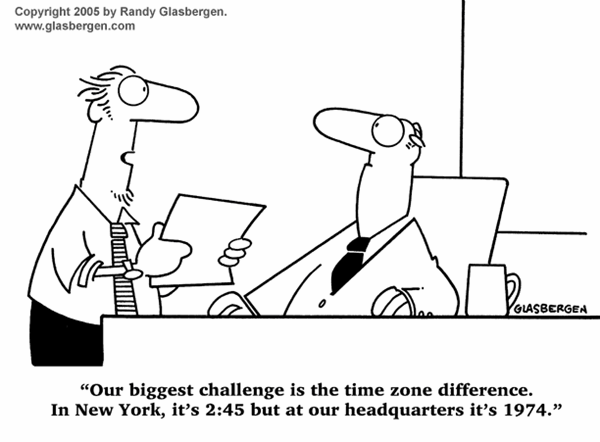
The technological developments of the past several decades have created an interconnected planet and fundamentally changed the nature of business in an overwhelming number of industries, giving rise to the emergence and continued growth of remote teams. Nowadays, it is commonplace to see employees working in the same companies across more time zones than can be counted on the fingers of both hands.
Still, working around different, often opposite time zones is a challenge that businesses usually don’t take into account until they actually become a problem. Yes, working across multiple time zones is a bit of an organizational quagmire, and it may seem difficult to - if you don’t mind us mixing different metaphors - juggle all the puzzle pieces, but a team collectively spanning far more than the usual 8-hour work clock is also an opportunity to raise your overall team productivity to incredible levels.
As with all things business-wise, a clever organization is key. A global remote team can be a high functioning, high performing, single-minded unit, but it needs a simple framework that allows its greatest qualities to come through while eliminating or minimizing any potential disadvantages of an asynchronous work clock.

Our experiences in working with clients operating in different corners of the globe have taught us that clear and effective communication can overcome any obstacles placed by time or space. It is no different with remote teams. Once you have made the right personnel choices and set up a technological infrastructure, you need to take a few extra steps to ensure that all members of your global remote team are involved, informed, and onboard. Here are our four essential requirements for a successful global remote team.
Information flow
Since managing a team 24-hours a day is not only humanly impossible but also probably illegal, the best way to ensure that all team members, regardless of their time zone, always know their tasks and priorities is to create a centralized information hub that allows everyone accesses to all necessary information related to their work. Different things work for different businesses, and you will need to find a solution that suits your team, whether it is an internal blog, a task management tool, or any other available option. The key is making sure that all team members are included in all relevant communication and have access to any knowledge, tools, and information they may need for their work. Smart planning can eliminate a lot of issues that require real-time communication, which is quite convenient if one of the participants is in an opposite time zone and in the process of trying to catch some z’s.

Being on the same page
As much as your team members are perceptive, responsible, and well organized, the value of good old real-time communication is still invaluable. To ensure that everyone is on the same page and that the short-term and long-term goals are communicated, try to establish regular dates for real-time communication between all team members. Depending on where individual members are located, finding the time that suits everyone may be more or less difficult. You can have a fixed time or rotate it between dates, but you should make it happen even if someone has to sacrifice and get up early or stay up late. Even a single weekly meeting can do wonders and keep everyone focused and involved, although brief daily meetings are great for everyone to stay in the loop-
Embracing the calendar
Operating an international remote team is not just about juggling different time zones, but also different cultures, national holidays, holiday seasons, and many more factors impossible to either predict or keep track of. Thankfully, there are numerous tools that will do this daunting work for us. Whether it is taking your Google Calendar mastery to the next level or searching out a different tool that works best for you, finding a solution to keeping up with the varying life pace of your individual team members is vital to your planning.
Keeping it light
Remote work can sometimes feel lonely and isolated, which is why it is essential to provide your team members with a channel to relax, take a moment off work, vent, share a personal tidbit or a joke they just heard - in short, to be human. This way team members can feel connected to each other, instead of being single units in the abstract entity of a business. Regardless of our level of commitment, we all need to take our mind off of work occasionally, and it is important to share these moments with those who share and understand your work environment.

Conclusion:
The challenge of organizing and optimizing a team spanning multiple time zones is far less daunting than it seems, thanks to the availability and the diversity of tools and solutions that allow us to communicate and coordinate tasks with ease and clarity. Smart planning and a bit of human touch will erase hours and kilometers and set your global team up for success.
